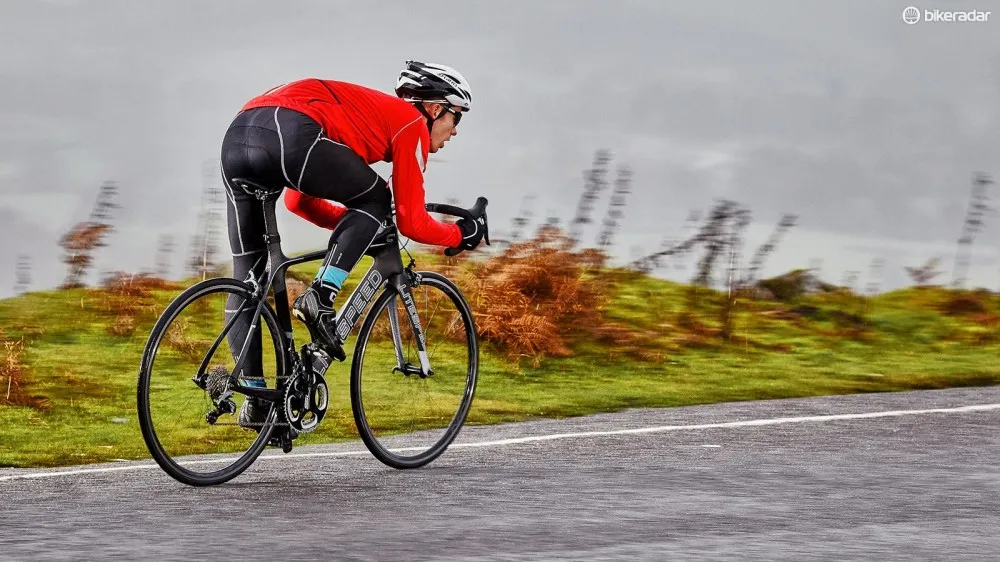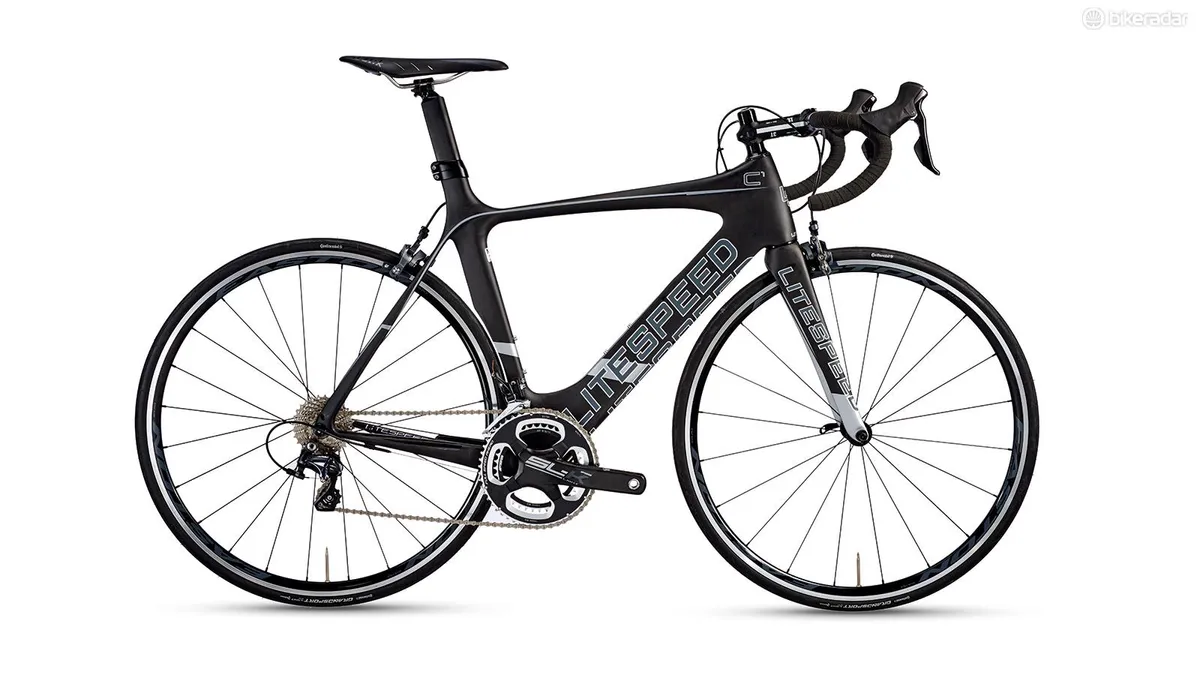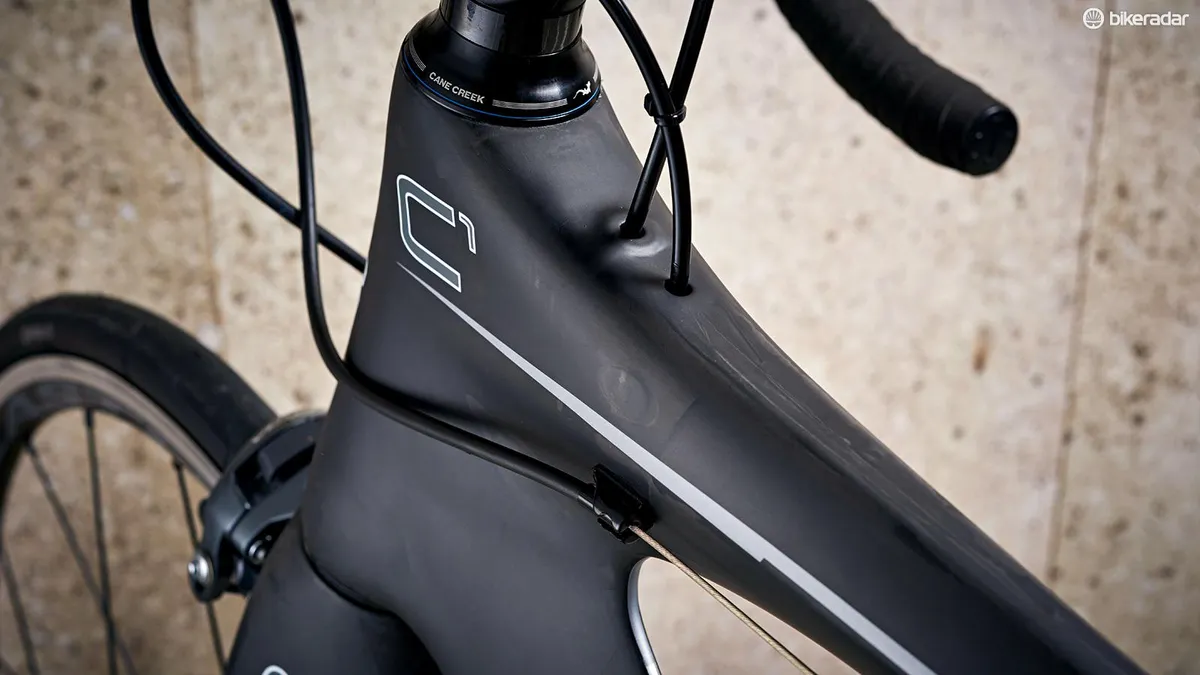For those who know Litespeed for its titanium, seeing the name on carbon is still a surprise. The C1 sits just beneath the C1R at the top of its aero road range, and shares its shaped AeroLogic tubes.
Burly junctions
Our ML model’s 16cm head tube allowed plenty of scope for setting the 3T cockpit up in a low position. Its minimal frontal profile comprises narrow fork legs with a compact crown, a slim hourglass head tube opening up to a truly vast junction with the tapering top tube, and giant wing-profiled down tube. The seat-tube has a large cutout for the rear wheel and tyre up to 25mm, and creates a beefy connection with the BB30 bottom bracket area, which is swamped in a sea of carbon.

Yet another take on the aero road bike down tubePower transfer is handled by the asymmetric chainstays – fairly round on the left side, and much larger and deeper on the drive side. The gear cables are housed in an unbroken outer casing from shifter to bottom bracket, but allowing enough cable for the bars to turn means they still bow out on each side of the stem, and our knees hit them on every standing pedal stroke.
Adding a cable tie behind the stem is an effective but inelegant solution, and on an aero bike we wouldn’t expect the rear brake cable to run externally between two top-tube stops.
Both our Easton EA70 wheels arrived with kinks, and 80mm valve stems that would suit the aero rims this bike is crying out for – but doesn’t have. Easton’s hubs have a reputation for reliability, and the 22mm wide, 25mm deep rims make for great all-round ability, but only moderate aerodynamic benefit.
Litespeed by name…
One thing’s for certain: the Litespeed lives up to its name in that it’s not overly heavy considering the spec, and not lacking in speed. As a pedalling platform, the C1 is extremely solid – no matter how hard you press, there’s no deflection from the frame’s lower section.

With a rear end that feels like a TT machine, the C1 seems more suited as a race bike
With the wheels and rigid 3T cockpit doing their bit, the C1 accelerates responsively and sprints handily, and when the road kicks up, the efficiency of that rear end delivers positive climbing performance.
It can certainly go, but is there a but? Well yes, though how big an issue it is depends entirely on your idea of the ideal bike.
The C1 is a very talkative frameset, which can be useful for ride feedback, but we didn’t always want to hear what it had to say. It would be unfair to call the ride harsh, but you will know exactly how broken the road surface is through both the bar and saddle. A switch to others that absorb more vibration would only help so much.
Over a couple of hours the ride quality is perfectly acceptable, but would you enjoy it every day on every ride? With a rear end that feels like a TT machine, the C1 seems more suited as a race bike, as it’s in its element when you’re powering along in a tuck.
Another effect of a frame with limited vertical compliance is that its unwillingness to conform to the ever-changing road surface means the C1 isn’t always as sure-footed on bumpy bends as we’d like. Adding 25mm tyres would help, but they might be a bit of a squeeze.
The drivetrain is faultless, and enhanced by the addition of FSA’s SL-K Light carbon crank. Sensible gear ratios cover just about all the scenarios in which a C1 customer might expect to find themselves, and the Eastons are better-than-average all-rounders.
null







